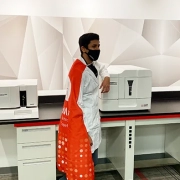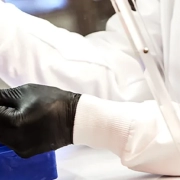xMAP® Connect: Advances in Aging and Dry Eye
Our recent user group meeting featured presentations of xMAP-enabled studies where multiplexing was essential
We were honored to host a number of terrific scientists at our recent xMAP® Connect user group meeting. In two of the talks, researchers reported on how they deployed Luminex’s xMAP® Technology for the analysis of tear fluid in patients with dry eye condition and for studies of anti-aging therapies.
Scleral Lens Wear: Managing Inflammation in the Fluid Reservoir
Maria Walker, an assistant professor at the University of Houston who pairs research with clinical time at the university’s eye clinic, spoke about a pilot study she performed to better understand the inflammatory response in patients suffering from dry eye, a condition affecting more than 50 million people in the US alone. For the study, she needed to analyze human tears — a remarkably complex fluid containing thousands of proteins, lipids, and metabolites.

To characterize these samples, Walker turned to xMAP Technology. She ran a cytokine panel to look for interleukins and matrix metalloproteinases. This first pilot study was designed to establish a robust protocol for collecting and analyzing tear fluid. In future studies, Walker hopes that her findings will eventually allow for a better understanding of the condition and offer the opportunity to evaluate new therapeutics.
Aging and Senescence: The Eternal Flame of Inflammation

In a separate presentation, Jair Espindola-Netto from the Mayo Clinic offered a look into his work on aging and senescence. Senescence, a cell fate associated with arrested growth but not apoptosis, is one of the mechanisms of aging. When senescent cells are injected into the knees of a healthy mouse, for instance, they induce the same kind of joint destruction associated with osteoarthritis, he said.
Espindola-Netto is using xMAP Technology to characterize proteins linked to senescence in translational research studies of anti-aging senolytic drugs, which aim to prevent senescence by making these cells less resistant to apoptosis.
He analyzed mRNA and cytokine markers in studies of a senolytic cocktail including dasatinib and quercetin, finding a significant reduction in senescent cells 14 days after treatment. He also identified a group of cytokines that appear to be correlated with the phenotype. Espindola-Netto noted that his goal is not to help people live longer, but rather to help them stay healthier as they age.
See Dr. Walker and Dr. Espindola-Netto’s full presentation here:
[arve url=”https://www.youtube.com/embed/WJMeZVXxIxQ?t=2082″ hide_title=”yes” /]








